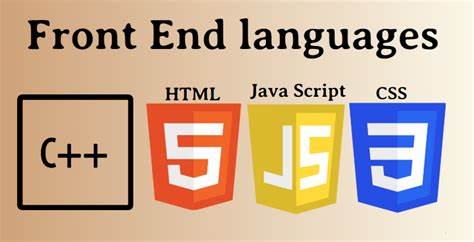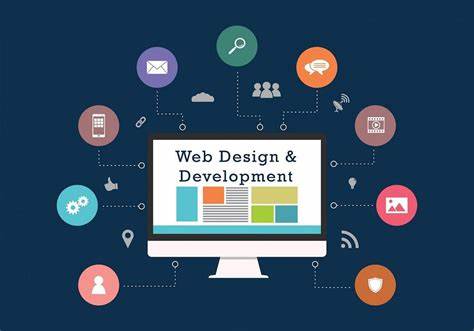
When it comes to front-end web development, adding style to a website is a crucial task
that enhances the user experience and aesthetic appeal. The primary tool for this purpose
is CSS (Cascading Style Sheets). CSS is an essential component in the toolkit of every
web developer, enabling the creation of visually compelling and user-friendly interfaces. In
this comprehensive article, we will explore the intricacies of CSS, its role in front-end
development, and how it integrates with other technologies to improve website aesthetics
and functionality.
Understanding CSS: The Basics
Cascading Style Sheets (CSS) is a style sheet language used to define the visual
presentation of a document written in a markup language like HTML. CSS controls the
layout, colors, fonts, and overall look and feel of a web page. By separating content from
design, CSS allows developers to maintain and update web pages more efficiently.
Core Concepts of CSS
1. Selectors and Properties: Selectors are used to target HTML elements, and
properties define the styles to be applied. For example, to change the color of all
paragraphs to blue, the selector would be p and the property would be color.
2. Box Model: The box model is fundamental to understanding layout in CSS. It
consists of margins, borders, padding, and the actual content area. Proper
manipulation of the box model is essential for precise layout control.
3. Flexbox and Grid: These are advanced layout modules in CSS. Flexbox is used for
one-dimensional layouts, making it easy to align items along a single axis. Grid, on
the other hand, is used for two-dimensional layouts, allowing for complex designs
with rows and columns.
4. Responsive Design: CSS includes features like media queries that enable
responsive design, ensuring that web pages look good on all devices, from desktops
to mobile phones.
The Role of CSS in Front-End Development
Styling HTML Documents
CSS is integral to styling HTML documents. Without CSS, web pages would be plain and
unattractive. CSS provides the tools to add colors, fonts, spacing, and other visual
elements that make web pages engaging and easy to navigate.
Enhancing User Experience
A well-designed website improves user experience (UX). CSS allows developers to create
interactive elements, animations, and transitions that enhance the usability and appeal of
a website. For instance, hover effects on buttons and links provide visual feedback,
making interactions more intuitive.
Consistency Across Pages
CSS promotes consistency across multiple web pages by using external style sheets.
These style sheets can be linked to different HTML documents, ensuring a uniform look
and feel throughout a website. This consistency is crucial for branding and user familiarity.
Integrating CSS with Other Technologies
HTML (HyperText Markup Language) and CSS work hand in hand. HTML structures the
content, while CSS handles the presentation. Together, they form the foundation of web
development. By keeping content and style separate, developers can update and maintain
websites more efficiently.
JavaScript is a programming language used to create dynamic and interactive web content.
When combined with CSS, JavaScript can manipulate styles in real-time, allowing for
dynamic changes to a web page’s appearance. This combination is powerful for creating
engaging user interfaces and enhancing the user experience.
CSS frameworks like Bootstrap, Foundation, and Bulma provide pre-designed components
and layout grids, speeding up the development process. These frameworks ensure
consistency, cross-browser compatibility, and responsiveness, allowing developers to
focus on customizing styles rather than building from scratch.
Advanced CSS Techniques
CSS Preprocessors
CSS preprocessors like Sass and Less extend the capabilities of CSS by adding features
such as variables, nested rules, and mixins. These tools enhance productivity and
maintainability, making it easier to write complex stylesheets.
CSS Variables
CSS variables, also known as custom properties, allow developers to store values that can
be reused throughout a stylesheet. This feature simplifies the process of making global
changes and promotes cleaner, more maintainable code.
Animations and Transitions
CSS includes properties for creating animations and transitions. Animations allow for
more complex visual effects, while transitions enable smooth changes between states.
These features are essential for creating modern, interactive web experiences.
CSS Grid Layout
CSS Grid Layout is a powerful tool for creating two-dimensional layouts. It provides a
flexible and efficient way to design complex web page layouts with precise control over
rows and columns. Grid Layout is especially useful for responsive design, as it allows
content to adapt seamlessly to different screen sizes.
Best Practices for Using CSS
Organizing Stylesheets
Organize your CSS into separate files for different sections of your website, such as layout,
typography, and components. This modular approach makes stylesheets easier to manage
and maintain.
Using Class and ID Selectors Wisely
Use class selectors for reusable styles and ID selectors for unique elements. Avoid
overusing ID selectors as they have higher specificity, which can make overriding styles
difficult.
Keeping Styles DRY (Don't Repeat Yourself)
Avoid duplicating styles by using reusable classes and variables. This practice reduces
redundancy and simplifies maintenance.
Testing Across Browsers and Devices
Ensure your styles work consistently across different browsers and devices. Use tools like
BrowserStack to test your website’s appearance and functionality on various platforms.
Conclusion
CSS is the backbone of web design, enabling developers to create visually appealing and
user-friendly websites. By understanding the core concepts of CSS, integrating it
effectively with HTML and JavaScript, and leveraging advanced techniques, developers can
enhance the aesthetic and functional quality of web pages. With the right practices and
tools, CSS empowers developers to build websites that are not only beautiful but also
efficient and responsive.
 Best Web Development Company in Delhi NCR | Oprezo India
Best Web Development Company in Delhi NCR | Oprezo India
 Best Mobile App Development Company in Delhi | Oprezo India
Best Mobile App Development Company in Delhi | Oprezo India
 Best Digital Marketing & SEO Company in Delhi NCR | Oprezo India
Best Digital Marketing & SEO Company in Delhi NCR | Oprezo India
 Best UI & UX Design Services in Delhi | Android & iOS UI/UX Development – Oprezo India
Best UI & UX Design Services in Delhi | Android & iOS UI/UX Development – Oprezo India
 Best CRM & MLM Software Development Company in Delhi | Oprezo India
Best CRM & MLM Software Development Company in Delhi | Oprezo India